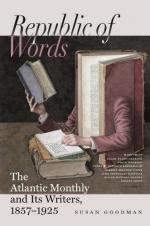On this point, however, his biographies and biographers have hitherto preserved absolute silence. They tell us he was married, and had several children by his wife; but, of the name, the rank, or the country of the lady they confess their ignorance. Todd informs us, that he “married a person of very inferior rank to himself,”— “a country lass";—and he quotes the “Faery Queen” to prove his assertion:—
“For, certes, she was but a country lass.”
It is true, those words occur in the passage cited by the commentator from the “Faery Queen”; most probably they refer to the person in dispute. But she was no more “a country lass,” in the ordinary acceptation of the phrase, than was Spenser himself (Clerk of the Council of Munster) “a shepherd’s boy.” Had Mr. Todd consulted that portion of our poet’s works especially devoted to record this passion, its progress and issue, he would have found she was a “lady,” whose rank was rather “disparaged” than otherwise by “sorting” with Edmund Spenser, albeit his blood was noble:—
“To all those happy blessings which
you have
With plenteous hand by Heaven
upon you thrown,
This one disparagement they to you gave,
That you your love lent to
so mean a one.”
Amoretti.
Sonnet lxvi.
Spenser devoted two entire poems expressly to this passion,—to wit, the “Amoretti,” describing its vicissitudes, and the “Epithalamion, or Marriage Song,” in which he celebrates its consummation. There are many allusions to it also in the “Faery Queen” and “Colin Clout’s come home again”; and from these sources we propose to supply the name, the lineage, and residence of the happy fair.
She was, undoubtedly, a person of rank and blood, residing in the poet’s vicinage, and is so described in many of the Sonnets. She is constantly addressed as “a lady,” enjoying the respect and the elegancies, if not the luxuries, of her condition,—well-educated, accomplished in the arts of design and embroidery,—at whose father’s house the poet was no infrequent visitor. Her residence, or that of her family, could not have been far from Kilcolman Castle; and was seated, most probably, on the banks of the Mulla, (Spenser’s favorite stream,) a tributary of the Blackwater, which empties into the sea at Youghal. For she is seen for the first time in the “Faery Queen” as the love of Colin Clout, (Spenser,) dancing among the Nymphs and Graces,—herself a fourth Grace,—on a mountain-top, the description of which exactly corresponds with all his other descriptions of his beloved Mole,—a mountain which nearly overhangs his castle; [12] and, undoubtedly, the bridesmaids and companions who attended her at the hymeneal altar were the “Nymphs of Mulla,” and,
“of the
rivers, of the forest green,
And of the sea that neighbours to her
near,”—
a localization which would fix her family mansion somewhere between Kilcolman Castle and the prosperous seaport town of Youghal,—but somewhat nearer to the former. This limits our inquiries within the narrow range of the lands bordering the Mulla waters.




